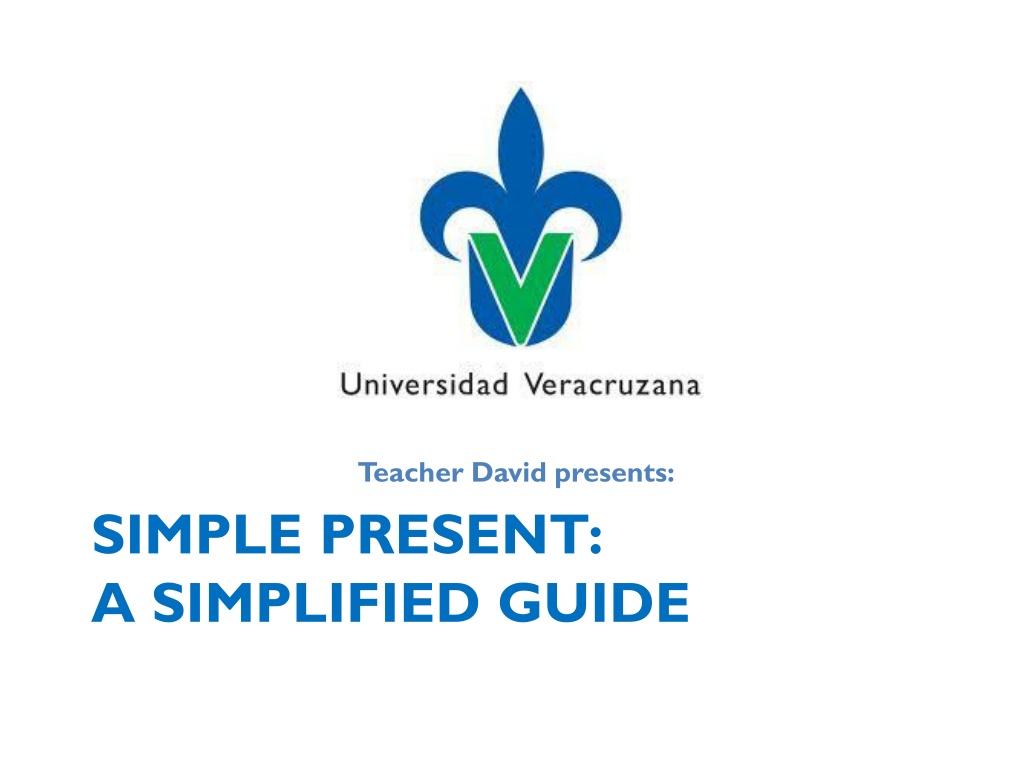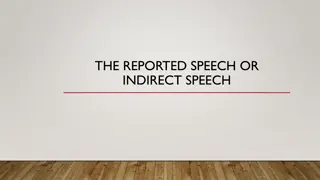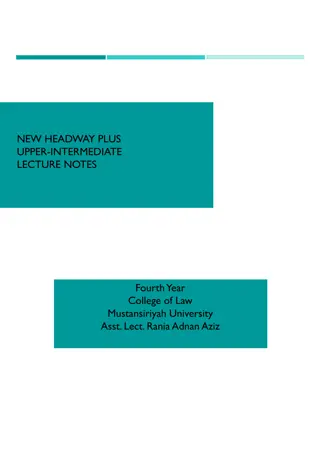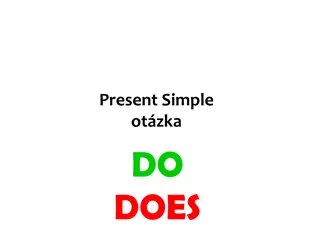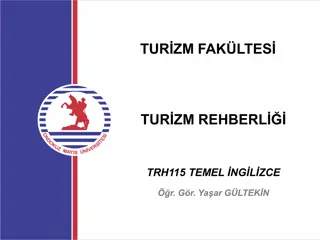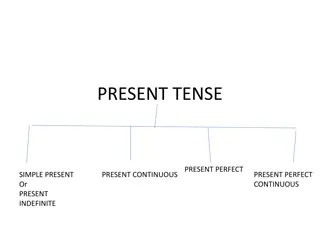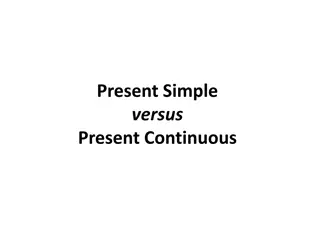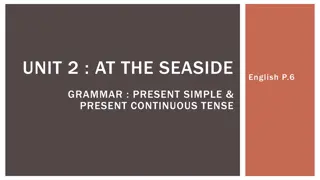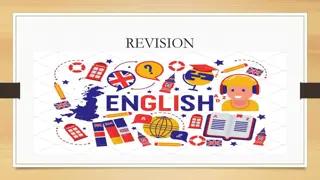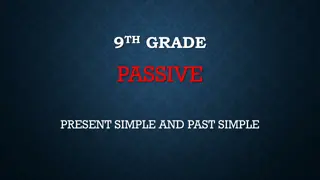SIMPLE PRESENT: A SIMPLIFIED GUIDE
Learn how to use the simple present tense for habits, regular actions, daily schedules, and situations that remain the same. Understand the rules for the 3rd person singular, negative forms, and interrogative forms. Practice describing others' likes, wants, needs, and possessions in the simple present tense.
Download Presentation

Please find below an Image/Link to download the presentation.
The content on the website is provided AS IS for your information and personal use only. It may not be sold, licensed, or shared on other websites without obtaining consent from the author. Download presentation by click this link. If you encounter any issues during the download, it is possible that the publisher has removed the file from their server.
E N D
Presentation Transcript
Teacher David presents: SIMPLE PRESENT: A SIMPLIFIED GUIDE
SIMPLE PRESENT IT IS USED: -For habits or actions that happen regularly: . I watch TV everyday. .She goes out on the weekend.
SIMPLE PRESENT -For situations that are always the same: We live in Xalapa. I like ice cream.
SIMPLE PRESENT IT IS USED: -For daily shcedules: She starts work at 8:30 everyday.
SIMPLE PRESENT The 3rd person singular (he/she/it): Most verbs take s I eat = he eats I like = she likes
SIMPLE PRESENT The 3rd person singular (he/she/it): Verbs ending in ss, sh, ch, x & o + es: ss = I miss she misses sh = I wash he washes ch = I watch She watches x = I fix he fixes o = I go she goes
SIMPLE PRESENT The 3rd person singular (he/she/it): Consonant + y= change y to + ies: I tidy = he tidies EXCEPT: I play = he plays (vowel + y)
SIMPLE PRESENT Negative form: Subject + don t / doesn t +verb +complement I don t like seafood Pedrito doesn t want to go to the movies Filomena doesn t study French on Saturdays. Our classmates don t come early on Friday.
SIMPLE PRESENT Interrogative Form: yes / no questions: Do / does+ subject + verb + complement + ? Do you like chocolate? Yes, I do. No, I don t. Does she study English with us? Yes, she does. No, she doesn t.
SIMPLE PRESENT Interrogative Form: information questions: -WH question word + do / does+ subject + verb + complement + ? Where do you buy chocolate? I buy it at the convenience store. When does she study English? She studies on Saturdays.
SIMPLE PRESENT TASK: Describe what other person likes, wants, needs and has. Example: Renata likes spaghetti. She wants a new pair of shoes. She needs a new job. She has wavy brown hair.
SIMPLE PRESENT Reference: Swan, M. (1995).Practical English Usage. Oxford: Oxford University Press. (2008)Diccionario Cambridge Pocket. Madrid: Cambridge University Press. Saslow, J; Ascher, A. Top Notch Fundamentals. New York: Pearson Education Mitchell, H.Q. Traveler elementary A1.2 American Edition. MM Publications
